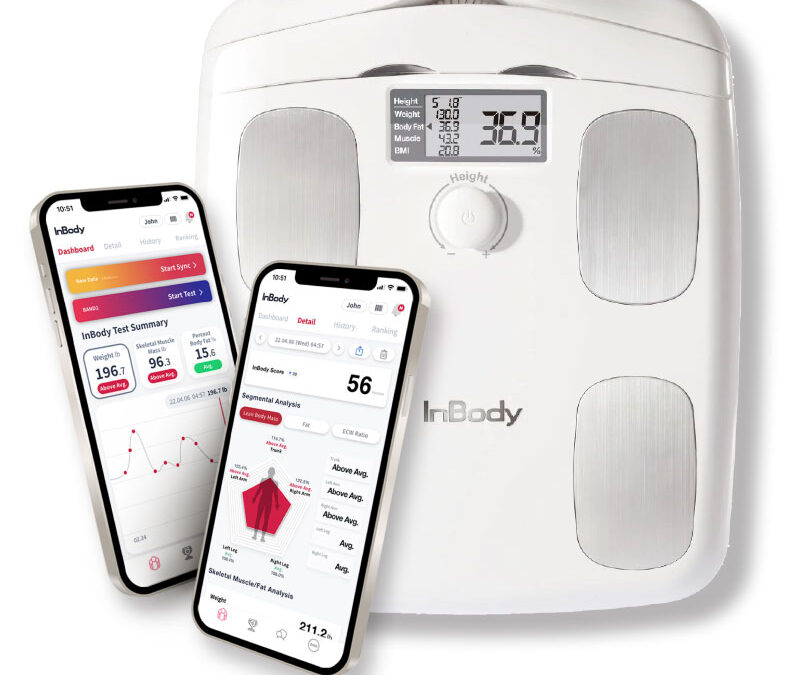How does it work?
The InBody device uses Direct Segmental Multi-frequency Bioelectrical Impedance Analysis to provide accurate readings of your body composition. In simpler terms, it is sending currents through the hand and feet electrodes to the 5 cylinders of your body to gain an accurate reading of your two legs, two arms, and trunk. In this case, trunk is everything that is not a limb. Depending on the frequency, the currents either pass through your cell membranes or go around them.
What does it measure?
After the 30-60 second InBody test is through, the results consist of: overall weight, lean body mass, body fat mass, total body water, intracellular water, extracellular water, body mass index (BMI), body fat percentage, and basal metabolic rate.
Overall Weight: The combined total of lean body mass and body fat mass
Lean Body Mass: This includes muscle, bones, organs, and water
Body Fat Mass: The total fat mass in your body
Total Body Water: The combined total of intracellular water and extracellular water
Intracellular Water: Water inside of your cells
Extracellular Water: Water outside of your cells
Body Mass Index: A calculation based on overall weight and height
BMI = Weight (kg) / Height2 (m2)
Body Fat Percentage: A calculation based on the amount of fat in your body compared to the overall weight.
BF% = (Body Fat Mass / Overall Weight) x 100
Why is the InBody an important tool in healthy weight loss?
By tracking the changes in composition from weigh in to weigh using the InBody, we are able to monitor muscle and water and focus the loss on body fat. This is a great tool in knowing if a diet needs to be altered, water intake needs to change, or exercise needs to increase/decrease.
How do I make sure I get the most accurate and consistent results?
Avoid eating two hours before a weigh in.
Weigh in at a similar time in similar clothing as your previous weigh in.
Wear tight fitting clothing.
Avoid drinking a lot of water close to a weigh in.
Avoid weighing in on a menstrual cycle.
Use the restroom prior to weigh in.
Avoid exercising right before a test.
Avoid wearing any accessories or metal.
Source: www.InBodyUSA.com

